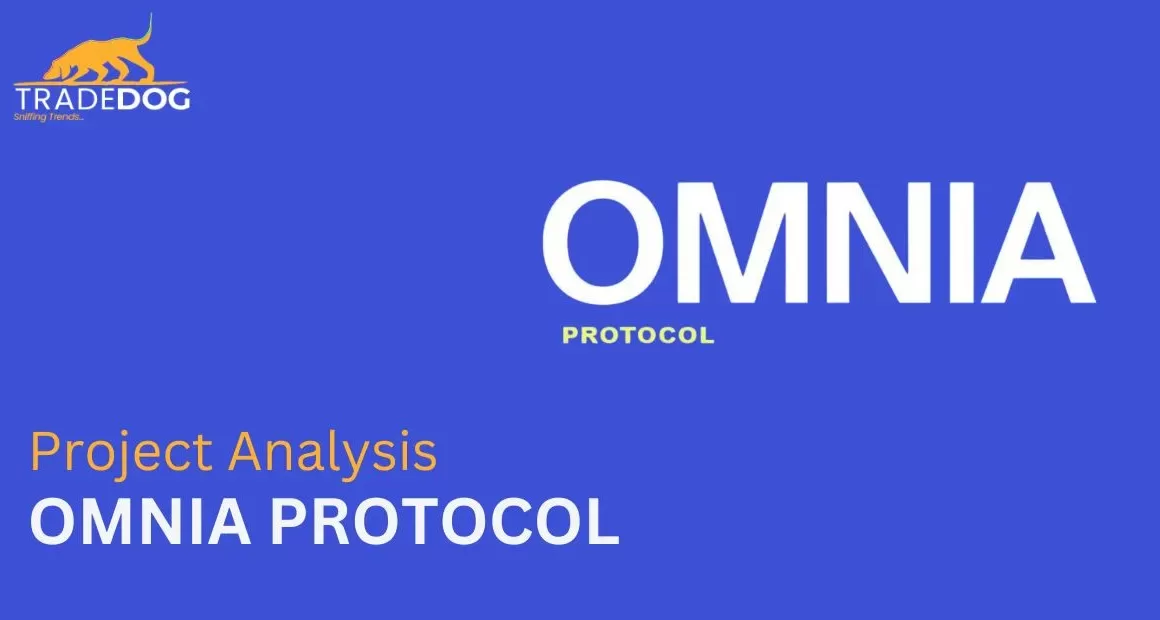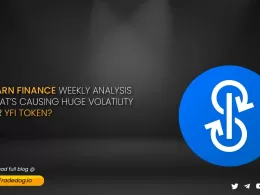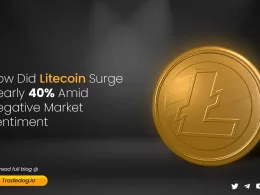Quick Links
According to the report by Purplesec, Hackers across the globe steal $46 million worth of cryptocurrency every month and 51% of attacks, in which hackers acquire more than half of the network’s computational power, are some issues that has plagued many blockchain systems. As several protocols are being built on blockchain on daily basis, the need for security is of the utmost importance, which is being addressed by blockchain security providers and one of the potential pioneers in this space is Omnia Protocol.
Founded by twin brothers Alexandru Lupascu and Cristian Lupascu (10+ years of experience in cryptography and blockchain), Omnia functions by rewarding nodes and enables users to trade, exchange, and transfer assets on the blockchain in an anonymous manner. Omnia is primarily concerned with off-chain privacy and managing access at each stage of the interaction with the blockchain.
What led to the development of the Omnia Protocol?
As the mass adoption of blockchain technology is happening, the chances of cryptocurrency becoming a part of daily transactions amongst people are also increasing day by day. Series of hacks are exploiting billions of dollars from the user’s hands, and the market is flooded with bodies ready to breach the privacy and security of blockchain.
Omnia protocol started for a reason. The reason founders realized that although there are privacy and security solutions for blockchain, they are still not completely secure. In a conversation with Tradedog, Alexandru mentioned:
“There are centralization biases causing a lot of outages and gaps of privacy in off-chain in the current blockchain market and Omnia protocol aims to eradicate that.”
What is Omnia Protocol and How does it Work
Omnia protocol is a layer 0 protocol that incentivizes existing node owners to run their nodes on different chains. The project aims that no single point of failure will ever prevent blockchain applications or wallets from interacting with it, thanks to the decentralized infrastructure architecture. Every node, whether it is mining or staking, is rewarded for assisting with access to blockchain in a trusted and decentralized manner. Reading and writing to blockchain shouldn’t be centralized or managed in this way. Omnia makes it possible for anyone to get paid for running and maintaining a node on a particular blockchain.
Omnia protocol has mainly 2 branches – Architecture for blockchain security and easy onboarding of people to participate in blockchain by becoming validators. This means any person with a standard computer can register a node to the blockchain and the security infrastructure works on top of the distributed blockchain. Additionally, the participants are rewarded for the work being done.
1st part is the security infrastructure
Let’s understand this with an easier explanation
Suppose you are any kind of Dapp (Wallet, exchange, etc). The last thing you would want is for your app to be used for transactions before even the transaction goes through. When you are making a transaction, Omnia simulates it by executing a dry run using the address from which the transaction is being made and the address to which the amount is being transferred.
The privacy role of Omnia protocol lies in between the nodes and the users (Dapps) where it scraps the data which could be used by front runners and this is being done by using mix nets which take an anonymous path to reach the final user and hence makes it impossible to be traced by bots. Alexander explains this with an easy example –
Suppose you decide to buy apples in huge numbers from a market and this intention gets leaked in the market. This could lead someone to buy all the apples before you and sell them at a premium to you. Now imagine a DeFi protocol like Uniswap, in which you make a transaction to trade an asset. As the transaction request is sent to the platform, it basically revolves around all the mempools on a pending state which can be used by front runners and could potentially leak your data. To address this, Omnia has integrated with these mempools which means whenever a transaction is submitted, it takes an anonymous route that is not visible to anyone until the transaction is mined. This means, although the data is visible, it cannot be changed as the transaction has been already mined.
2nd part is the rewards for node providers
Omnia allows anyone around the world to earn passive income by registering as a node through their spare computer. In the current scenario, the node provider only gets rewarded if they have a mining node and there are ‘n’ number of full nodes which is being used in the market for which the node provider is not rewarded. Omnia allows registering these nodes into their platform by purchasing a subscription, which gets joined to the distributed node pools around the world for which they get rewarded by the platform. Essentially, Omnia works on these pools to provide privacy and security features. The project claims that they already have 1000+ node owners registered on their platform.
Token Overview and Use Case ($OMNIA)
Token name: OMNIA
- Total supply: 100,000,000
- Initial market cap: $1,761,400
- Initial circulating supply: 7,045,600
The vesting schedule looks like this
Token Utility
Rewards
A ⅓ of the subscription fees is distributed to both nodes & privacy relayers as rewards.
Staking
Node providers and privacy relayers will stake OMNIA tokens in order to join the network. They commit to some specific performance metrics and their reward is decreased if conditions are not consistently met. In extreme conditions where they have malicious behavior against the network’s benefit, they get slashed and lose the staked tokens.
Obtaining subscriptions for access
Subscriptions are obtained using OMNIA tokens.
DEX liquidity and farm pools
Contributing the tokens to the DEX liquidity pools ensures that OMNIA tokens can be traded when needed.
Token Sales
| Previous Fundraise | $3Mn | Investors included DAO Maker, LD Capital, Evanghelion, ReBlock, Raptor Capital, Halvings Capital, LVT Capital, and New Tribe Capital. |
| Upcoming IDO | March’23 on Dao Maker (Raising $200K) | Tokens – 800KPrice – $0.250 |
Project Team
1. Alexandru Lupascu (Co-Founder and CTO)
Alexandru has prior experience in blockchain and cryptography. Has a strong technical background in programming and IT security. Former experience includes blockchain solution development at Certsign and former co-founder at Dataphoenix and Blocksecsys.
2. Cristian Lupascu (Co-founder and CEO)
With more than six years of expertise in cryptography, including research, academic work, and designing and creating secure solutions in accordance with industry standards, Cristian holds a Ph.D. in the subject of privacy-enhancing technology (security, interoperability, etc.). Just like his twin brother, Cristian has been associated with blockchain technology and is aiming to solve privacy issues through the Omnia protocol.
3. Liza Horowitz (CMO)
With 20+ years of experience in marketing, Liza heads the marketing team at Omnia. Prior crypto marketing experience in Fast Access Blockchain, Cardano, Everest, and BTSE.
Click here to explore the entire team
Social Media Presence
Twitter – 18K Followers
Telegram – 6750 members
LinkedIn – 730 Followers
Conclusion
To conclude, Omnia protocol aims to make blockchain reading and writing operations decentralized rather than centralized. Every node (mining and non-mining) should be rewarded for assisting with decentralized and trusted access to the blockchain. With Omnia, anybody may get paid for running and maintaining a node on a particular blockchain. Along with that, the technical infrastructure provided by the platform ensures privacy and security for blockchains to avoid any personal data leaks and outages.
Omnia is backed by a strong team that is trying to solve privacy issues with multiple partnerships, that includes companies like ChainAnalysis, BlockWallet, Alpha Catalyst, CryptoFomo, etc.
With the IDO launching in March this year, Omnia aims to integrate the use of their native token $OMNIA into their platform which will allow the token holders to join the network. Along with that, the team has already created more utilities of the token which will ensure the holding strength and the velocity of tokens in the ecosystem.
The mindset of people is shifting more towards decentralization and privacy after several illicit activities are getting executed on a regular basis. Omnia protocol’s security layer systems have the potential to tackle those issues and capture the market with its unique infrastructure. Seeing the upcoming trends as the world shifts gears towards decentralized protocols will be exciting.
Personal Opinion
- As dApps are struggling to bring privacy and security to their platform Omnia with its infrastructure, can solve this issue.
- As the protocol is actively making partnerships and is being backed by names like Google, AWS, and Microsoft. It has a lot of potential to capture the market.
- Considering the utility of the token includes node providers reward, the token has potential to accrue value and perform good in the market.
- The protocol already has 1000+ node providers and team claims more users are getting to be a part of the protocol. This will increase the utility and the value of the token in the market
| Green Flags | Omnia protocol has partnered with some prominent names in the market, including Chain Analysis and Halvings CapitalThe project is well funded with previous investments totaling to $3.2 Mn The team has prior experienced in blockchain and cryptography |
| Red Flags | Considering over 18K followers, the traction on social channels is low |









